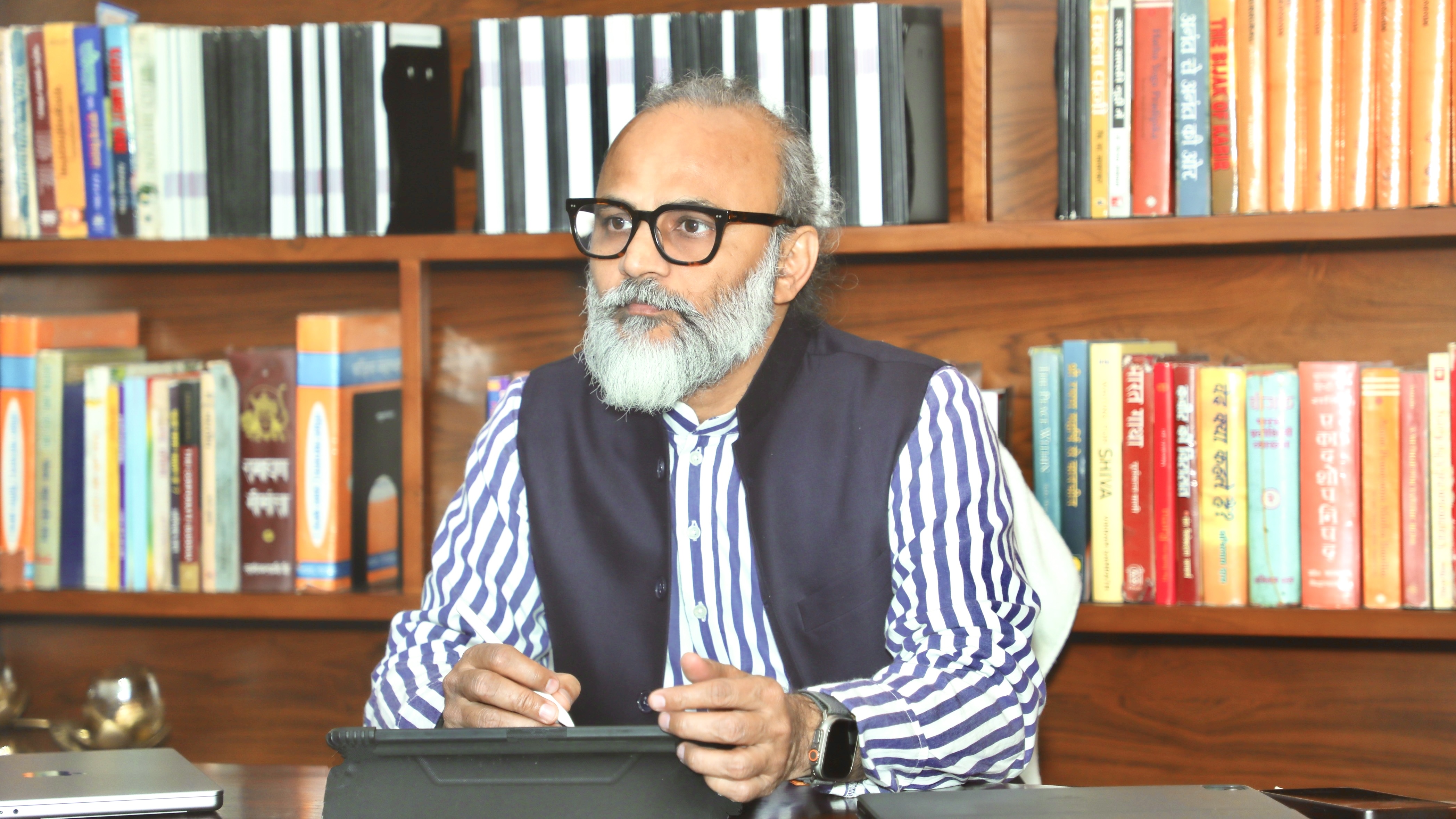
Is Stability Really Possible?
8 months ago By Yogi AnoopThe Secret of Stability: Is Anything Truly Stable?
Student: Yogi Anoop ji, we see objects as stable, but science tells us that nothing is truly stationary. What does this mean? And what does it imply to attain stability in meditation?
Yogi Anoop: Long before modern science, Indian philosophers had already described the fundamental nature of the material world as ever-changing. Even from a scientific perspective, nothing in this universe is truly stable. What appears to be motionless and unchanging is actually composed of atoms and molecules that are constantly in motion. The Earth rotates on its axis, and our bodies are also continuously changing.
This is not just the truth of the physical world but also of the mental and emotional realms. Just as no physical object is truly static, our mind, intellect, senses, and body are also never still. Thoughts continuously come and go, emotions fluctuate, and every moment is a part of this ongoing transformation.
Externally, a person may appear calm, but within them, there is a constant subtle flow of thoughts, emotions, and energies. Hence, to believe that only the visible world is stable is an illusion.
Then What is Truly Stable?
If everything is unstable, then what is stable? Is there anything that remains constant?
The direct and simple answer is that the one who experiences all these changing elements is the only truly stable entity. The awareness of instability itself suggests the existence of something stable. What could this observing element be? It is the seer, the witness, the ‘I’.
When you observe a statue, the flame of a lamp, or a mountain as still, who is the one perceiving this stillness? If you are aware of the instability of things, it implies that the observer itself is stable.
This is the ultimate non-dual truth that yoga and meditation teach us—the observer is unchanging. Consciousness, in its purest form, is stable. The world is in constant motion, but the witness of this motion is still. If the observer were also in motion, it would not be able to perceive the motion of anything else.
The Mystery of Thoughts and the Instability of the Mind
The flow of thoughts in the mind is continuous—sometimes happiness, sometimes sorrow, sometimes peace, sometimes restlessness. This change never ceases. Just as a river continuously flows, thoughts in the mind also keep moving.
However, when this ‘I’, which is actually the observer, starts identifying itself as a part of this flow, confusion arises. This is the root of ignorance. When the mind becomes restless, and we associate ourselves with that restlessness, it leads to stress, anxiety, and mental instability.
Is Stress Rooted in This Instability?
The body, made up of the five elements, is naturally dynamic. The mind is also restless because it interacts with the ever-changing external world through the senses. Any experience gained through this interaction is also transient.
Yet, the ultimate goal of all human endeavors is to attain stability. For example, a person works hard to earn wealth (which is an action, a movement) with the hope that financial stability will bring peace and security in the future.
Is Stability Attainable?
It is evident that every action performed by humans has the ultimate aim of achieving a sense of stability. However, due to the chaos of thoughts, this stability often remains unattainable.
It is easy to be unstable in an unstable environment, but the real challenge is to experience stability amidst constant change. This is the true objective of philosophy. This is the ultimate goal of yoga and meditation.
Thus, stability is not something to be sought in the external world—it must be discovered within one’s own consciousness. The witness, the observer, the ‘I’—is the only thing that is truly stable.
Recent Blog
Copyright - by Yogi Anoop Academy
